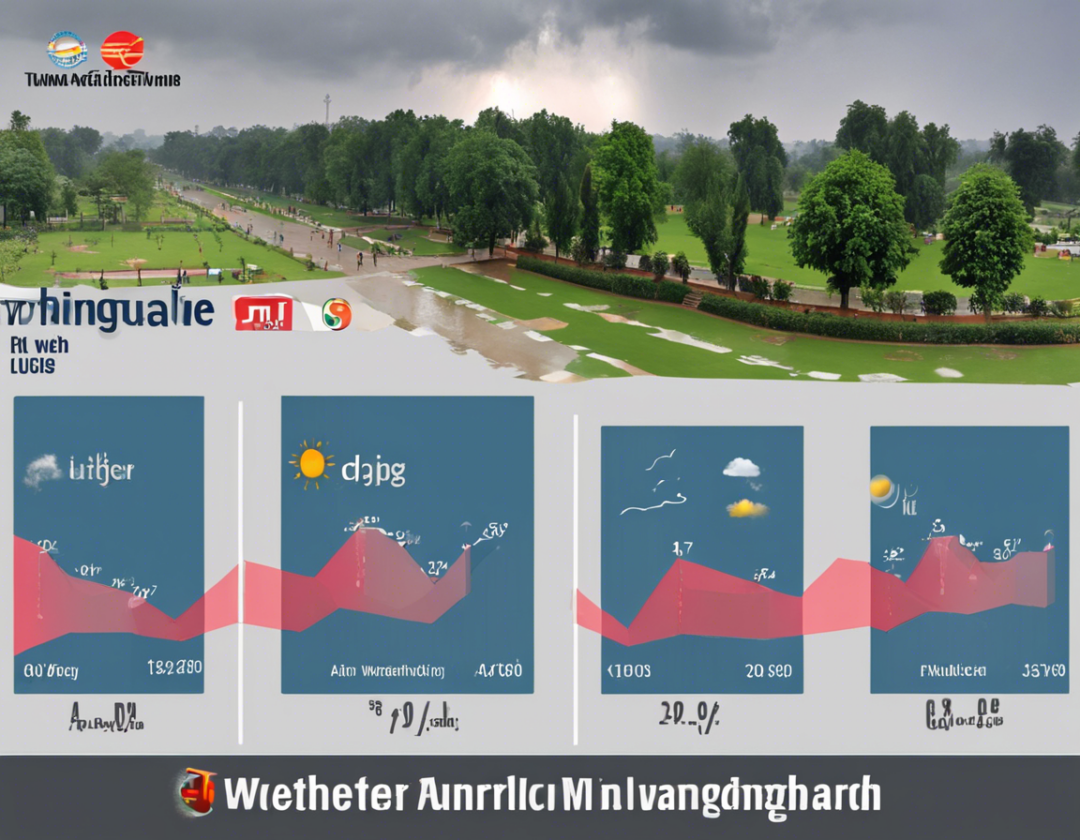Located in the northern region of India, Chandigarh is a vibrant city known for its urban design and well-planned architecture. As a popular tourist destination and one of the earliest planned cities in post-independence India, Chandigarh attracts visitors throughout the year. One important factor that significantly impacts the experience of tourists and residents alike is the weather in Chandigarh.
Understanding the Climate in Chandigarh
Chandigarh experiences a subtropical continental climate, characterized by very hot summers, mild winters, and monsoon rains. The city has three main seasons: summer, monsoon, and winter. Each season brings its own unique weather conditions to the city.
Summer (March to June)
The summer months in Chandigarh are hot and dry. With temperatures often reaching above 40 degrees Celsius (104 degrees Fahrenheit), summers can be quite intense. It is important to stay hydrated and seek shade during the peak hours of the day to avoid heat-related illnesses. Light and breathable clothing is recommended during this season.
Monsoon (July to September)
The monsoon season in Chandigarh brings relief from the scorching heat of summer. The city receives moderate to heavy rainfall during these months, which helps in cooling down the temperatures. However, flooding can be a concern during particularly heavy rainfall, so it is advisable to stay informed about the weather conditions and take necessary precautions.
Winter (October to February)
Winters in Chandigarh are mild and pleasant. The temperatures can drop to around 5 degrees Celsius (41 degrees Fahrenheit), especially during the night. Light woollens are sufficient to keep warm during this season. The clear skies and cool weather make winter a popular time for outdoor activities and sightseeing in the city.
Weather Patterns and Variability
Chandigarh experiences variability in weather patterns, with occasional extremes in temperature and rainfall. While the overall climate is conducive to year-round visits, it is important to be prepared for unexpected changes in the weather. Here are some key points to consider:
- Weather forecasts: Stay updated with the latest weather forecasts to plan your activities accordingly.
- Temperature fluctuations: Be prepared for sudden changes in temperature by carrying appropriate clothing.
- Rainfall: Pack an umbrella or raincoat during the monsoon season to stay dry during sudden showers.
- Weather-sensitive activities: Some outdoor activities may be affected by the weather, so have alternative plans in case of inclement conditions.
Best Time to Visit Chandigarh
The best time to visit Chandigarh largely depends on individual preferences and the type of activities you plan to engage in. Here are some considerations for each season:
- Summer: Ideal for indoor activities and exploring indoor attractions like museums and art galleries.
- Monsoon: Perfect for nature lovers who enjoy the lush greenery and pleasant weather.
- Winter: Great for outdoor enthusiasts interested in exploring gardens, parks, and outdoor markets.
Frequently Asked Questions (FAQs)
1. Does Chandigarh experience extreme weather conditions?
Chandigarh can experience extreme heat during summers and occasional heavy rainfall during the monsoon season. However, winters are mild with cool temperatures.
2. What is the hottest month in Chandigarh?
The hottest month in Chandigarh is usually June, with temperatures soaring above 40 degrees Celsius.
3. How heavy is the rainfall during monsoon in Chandigarh?
Chandigarh receives moderate to heavy rainfall during the monsoon season, usually from July to September.
4. Are there any weather-related precautions to take while visiting Chandigarh?
Visitors to Chandigarh should stay hydrated during summers, carry an umbrella during the monsoon season, and dress warmly during winters to avoid weather-related issues.
5. What is the most pleasant time to visit Chandigarh?
For those who prefer milder temperatures and clear skies, the winter months from October to February are the most pleasant for visiting Chandigarh.
6. Are there any indoor attractions to visit in Chandigarh during extreme weather conditions?
Yes, Chandigarh offers a variety of indoor attractions such as the Rock Garden, Government Museum and Art Gallery, and Capitol Complex that can be explored during extreme weather conditions.
7. Does Chandigarh experience snowfall during winters?
Snowfall is rare in Chandigarh, with temperatures rarely dropping low enough to support snowfall in the region.
8. What activities are popular during the monsoon season in Chandigarh?
Popular activities during the monsoon season in Chandigarh include enjoying the greenery in Sukhna Lake, visiting the Rose Garden, and exploring the Le Corbusier Centre.
9. How should tourists prepare for the weather in Chandigarh?
Tourists should check the weather forecast before their trip, pack appropriate clothing, carry umbrellas/raincoats during monsoons, and stay hydrated during summers.
10. Is it safe to travel to Chandigarh during extreme weather conditions?
While Chandigarh is well-equipped to handle extreme weather conditions, it is advisable for travelers to stay informed, follow safety guidelines, and plan their activities accordingly to ensure a safe trip.
Conclusion
Understanding the weather patterns in Chandigarh can enhance your travel experience and help you plan your trip effectively. Whether you prefer the heat of summer, the coolness of winter, or the refreshing rains of the monsoon, Chandigarh offers something for every traveler. By staying informed about the weather conditions and being prepared for any eventuality, you can make the most of your visit to this beautiful city.

